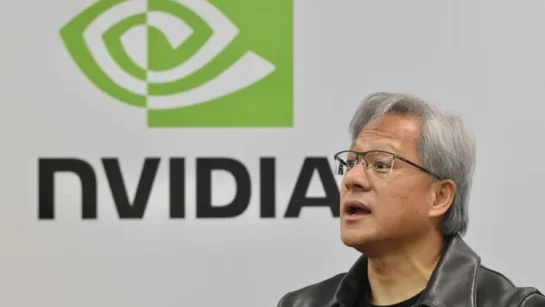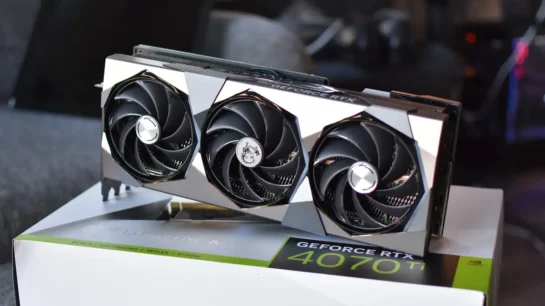Title: A Visionary Leader Shaping the Future of Computing
 In the dynamic world of technology, certain individuals stand out for their visionary leadership, relentless innovation, and profound impact on the industry. Jensen Huang, co-founder and CEO of NVIDIA Corporation, exemplifies these qualities, earning acclaim as one of the most influential figures in the realm of computing. With a career spanning decades, Huang has not only revolutionized the graphics processing industry but has also spearheaded advancements in artificial intelligence, high-performance computing, and autonomous systems. In this comprehensive exploration, we delve into the life, achievements, and enduring legacy of Jensen Huang.
In the dynamic world of technology, certain individuals stand out for their visionary leadership, relentless innovation, and profound impact on the industry. Jensen Huang, co-founder and CEO of NVIDIA Corporation, exemplifies these qualities, earning acclaim as one of the most influential figures in the realm of computing. With a career spanning decades, Huang has not only revolutionized the graphics processing industry but has also spearheaded advancements in artificial intelligence, high-performance computing, and autonomous systems. In this comprehensive exploration, we delve into the life, achievements, and enduring legacy of Jensen Huang.
Early Life and Education:
Born on February 17, 1963, in Tainan, Taiwan, Jensen Huang’s journey to becoming a technology pioneer began with humble beginnings. Raised in rural Taiwan, Huang’s passion for technology was ignited at a young age, fueled by a fascination with electronics and computers. His family eventually immigrated to the United States, where Huang pursued higher education in engineering.
Huang earned a Bachelor of Science degree in electrical engineering from Oregon State University and later obtained a Master of Science degree in electrical engineering from Stanford University. It was during his time at Stanford that Huang’s entrepreneurial spirit and drive for innovation began to take shape, laying the groundwork for his future endeavors in the technology industry.
Founding NVIDIA:
In 1993, Jensen Huang co-founded NVIDIA Corporation alongside Chris Malachowsky and Curtis Priem, with a vision to revolutionize computer graphics. The company’s initial focus was on developing graphics processing units (GPUs) for gaming and multimedia applications. Under Huang’s leadership, NVIDIA quickly emerged as a leader in the graphics industry, introducing a series of groundbreaking GPUs that set new standards for performance and visual fidelity.
Huang’s strategic vision and commitment to innovation propelled NVIDIA to new heights, as the company expanded its product portfolio to encompass a diverse range of industries, including data science, artificial intelligence, and autonomous vehicles. NVIDIA’s GPUs became indispensable tools for researchers, developers, and businesses seeking to leverage parallel processing for complex computational tasks.
Driving Innovations in Computing:
Throughout his tenure as CEO of NVIDIA, Jensen Huang has been at the forefront of numerous technological breakthroughs that have reshaped the computing landscape. Under his guidance, NVIDIA pioneered the use of GPUs for general-purpose computing, paving the way for advancements in scientific research, machine learning, and high-performance computing.
One of Huang’s most significant contributions to computing is the development of CUDA (Compute Unified Device Architecture), a parallel computing platform and programming model that enables developers to harness the computational power of GPUs for a wide range of applications. CUDA has become the de facto standard for GPU computing, empowering researchers and engineers to accelerate their workloads and unlock new possibilities in fields such as deep learning, computational biology, and computational fluid dynamics.
Advancing Artificial Intelligence:
In recent years, Jensen Huang and NVIDIA have been instrumental in driving advancements in artificial intelligence (AI) and deep learning. NVIDIA’s GPUs have emerged as the preferred hardware platform for training and deploying neural networks, thanks to their unparalleled computational power and efficiency. Huang’s strategic investments in AI research and development have positioned NVIDIA as a leader in the AI revolution, with applications spanning autonomous vehicles, healthcare, finance, and more.
Moreover, Huang’s leadership has led to the creation of specialized hardware accelerators such as NVIDIA Tensor Cores, which are optimized for AI workloads and deliver exceptional performance for tasks like deep learning inference and training. These innovations have propelled NVIDIA to the forefront of AI innovation, fueling breakthroughs in natural language processing, computer vision, and reinforcement learning.
Shaping the Future of Autonomous Systems:
In addition to AI, Jensen Huang has been a driving force behind NVIDIA’s efforts in autonomous systems and robotics. NVIDIA’s DRIVE platform, which includes hardware and software solutions for autonomous vehicles, has garnered widespread acclaim for its capabilities in perception, localization, and path planning. Huang’s vision for a future with safer, more efficient transportation systems powered by AI and robotics has inspired collaborations with leading automakers and technology companies worldwide.
Under Huang’s leadership, NVIDIA has expanded its presence in the automotive industry, forging partnerships with industry leaders to develop next-generation autonomous vehicles and advanced driver-assistance systems (ADAS). The company’s relentless pursuit of innovation and safety in autonomous driving has positioned it as a key player in shaping the future of mobility.
Philanthropy and Social Impact:
Beyond his contributions to the technology industry, Jensen Huang is also known for his philanthropic endeavors and commitment to social impact. Through initiatives such as the NVIDIA Foundation, which supports charitable causes focused on education, health, and the environment, Huang has demonstrated a dedication to making a positive difference in the world. Additionally, NVIDIA’s corporate responsibility efforts, including sustainability initiatives and diversity and inclusion programs, reflect Huang’s values of integrity, empathy, and social responsibility.
Conclusion:
In conclusion, Jensen Huang’s remarkable journey from immigrant son to visionary leader is a testament to the power of perseverance, passion, and innovation. As the co-founder and CEO of NVIDIA Corporation, Huang has not only revolutionized the graphics processing industry but has also driven advancements in artificial intelligence, high-performance computing, and autonomous systems. His strategic vision, technical expertise, and unwavering commitment to excellence have positioned NVIDIA as a global leader in computing, shaping the future of technology and empowering individuals and organizations to achieve their greatest potential. As we look ahead, Jensen Huang’s legacy as a transformative leader and pioneer in computing will continue to inspire generations to come, leaving an indelible mark on the fabric of human progress.
VIDEOS


